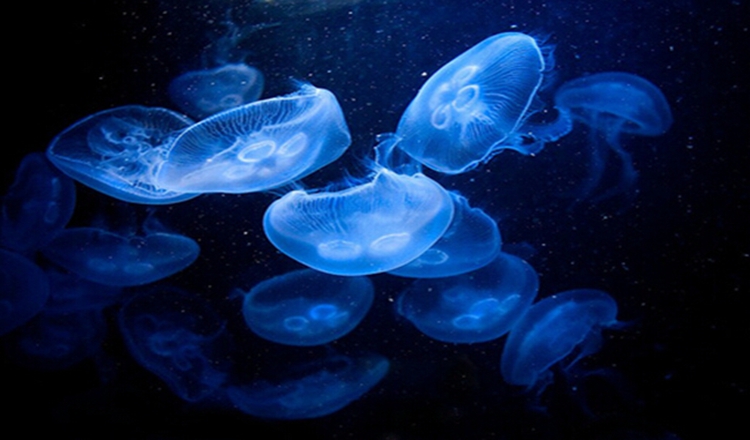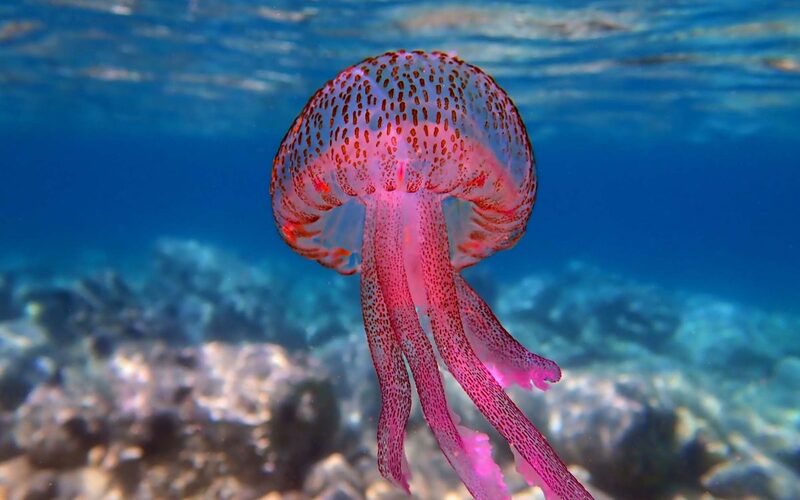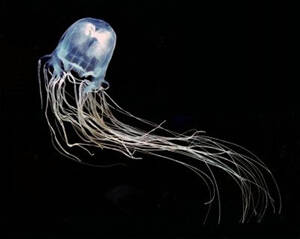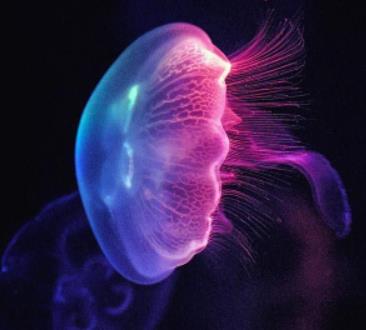Aurelia aurita
IUCN
LCBasic Information
Scientific classification
- name:Aurelia aurita
- Scientific Name:Moon jellyfish, UFO jellyfish, Moon jellyfish
- Outline:Coelenterata
- Family:Scyphozoa Semaeostomeae Ulmaridae Aurelia
Vital signs
- length:10-30 cm
- Weight:
- lifetime:Months-Years
Feature
Transparent jellyfish
Distribution and Habitat
They live in the Atlantic, Pacific, and Indian Oceans. Generally speaking, they live near the coast and can be seen in estuaries and harbors. They live in seawater with a water temperature of 6-31°C, and are best suited to a water temperature of 9-19°C. Moon jellyfish prefer temperate oceans with stable currents. They generally appear in waters with salinity below 3-23ppt.
Appearance
The body of the moon jellyfish is transparent, generally 25-49 cm wide, with four distinct horseshoe-shaped reproductive glands in the center. There are many tentacles on the edge of the umbrella, and there is a quadrangular mouth in the center of the umbrella, with an oral arm at each of the four corners of the mouth. The oral arms have toxic stinging cells, but they do not use stinging cells often. Most reports show that the toxicity of the moon jellyfish is mild, and only a small number of sensitive people will feel uncomfortable after touching it.
Details
Moon jellyfish feed on plankton such as mollusks, crustaceans, worms and copepods.
Moon jellyfish occasionally eat gelatinous zooplankton such as hydromedusae and comb jellies.
Moon jellyfish also use their stinging cells to capture plankton.
Moon jellyfish live and reproduce for a few months before dying naturally. Rarely live longer than six months in the wild, but some can live for several years in aquariums. The warm currents in late summer reduce their food intake, which in turn reduces their tissue regeneration rate, making them particularly susceptible to bacterial infection. In addition, seasonal reproduction also causes them to open their gonads and become infected.

Like many jellyfish, the life history of the moonfish at the surface of the water alternates between polyps and medusae.
After the male jellyfish releases sperm, it will enter the umbrella-shaped reproductive organ through the mouth of the female jellyfish and combine with the egg to form a fertilized egg, which will then be released from the mother's mouth.
After the fertilized egg floats in the water for a period of time, it forms a floating larva; the floating larva attaches to a solid substrate.
After the floating larva is fixed, it develops into a polyp.
When there is sufficient nutrition, the polyp produces a disc-shaped body through budding (asexual reproduction), and then develops into a mature jellyfish.
Natural enemies of moon jellyfish
Sunfish, leatherback turtles, and very large Victoria multi-tube luminous jellyfish will prey on moon jellyfish.
Moon jellyfish are preyed on by seabirds.
Parasites can also cause harm to moon jellyfish.



